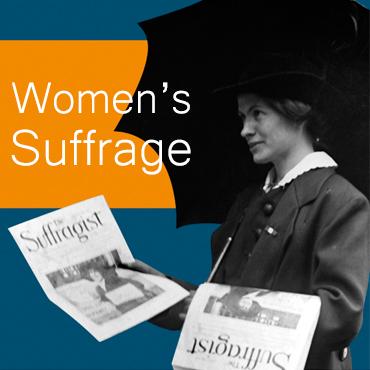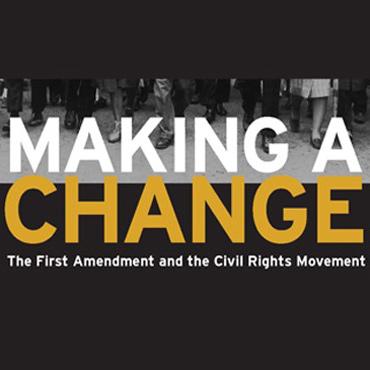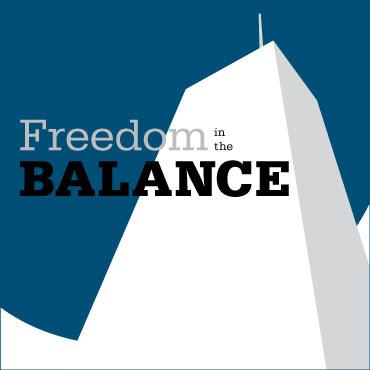Civil Rights Media Map - 1963
See how geography, social and political values, economics and history affected newspapers' exercise of freedom of press during the civil rights movement.
Get even more great free content!
This content contains copyrighted material that requires a free NewseumED account.
Registration is fast, easy, and comes with 100% free access to our vast collection of videos, artifacts, interactive content, and more.
NewseumED is provided as a free educational resource and contains copyrighted material. Registration is required for full access. Signing up is simple and free.
With a free NewseumED account, you can:
- Watch timely and informative videos
- Access expertly crafted lesson plans
- Download an array of classroom resources
- and much more!
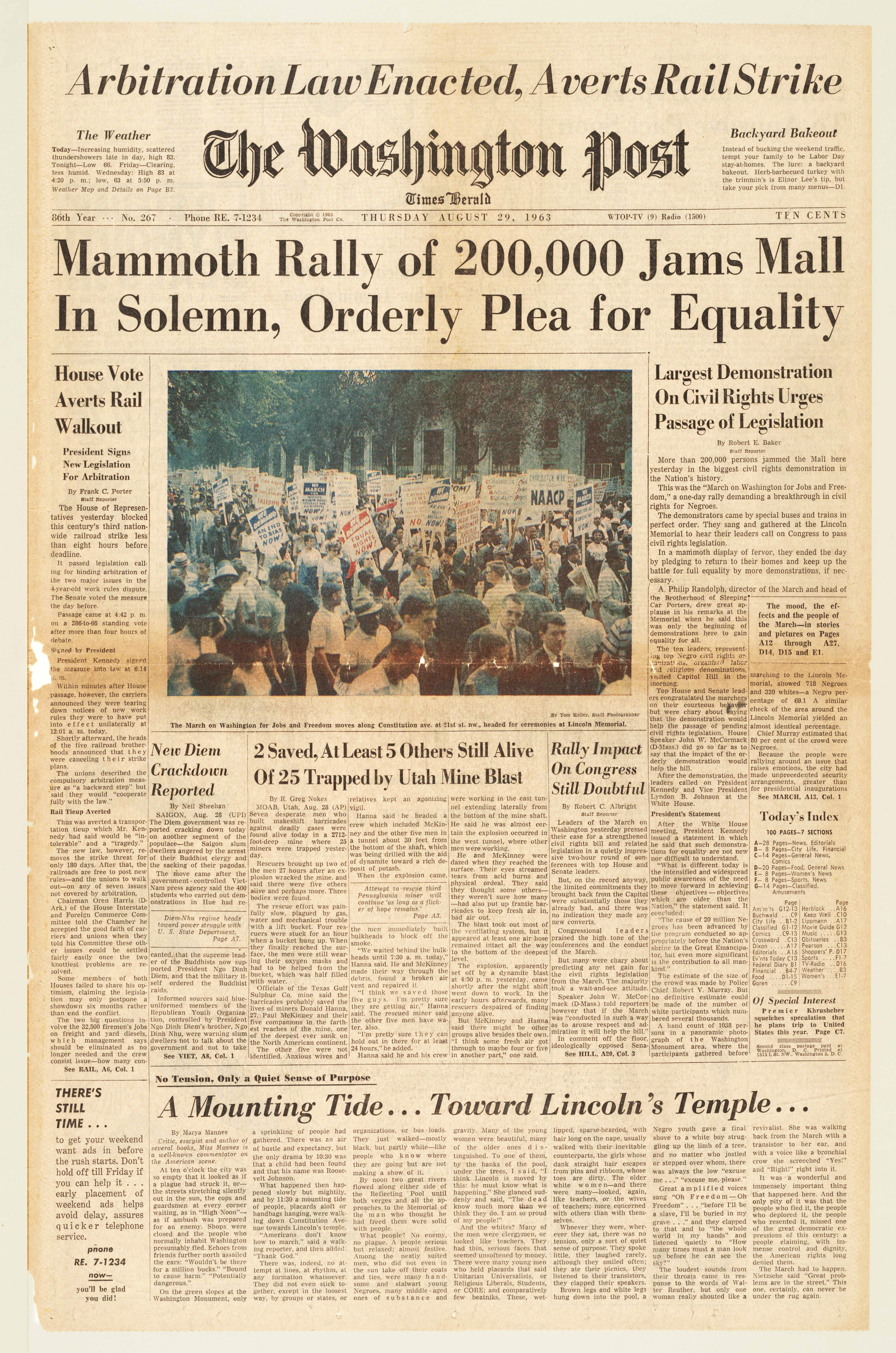
The Washington Post
First published in 1877, The Washington Post nearly folded in the 1930s. Eugene Meyer bought the daily newspaper at a bankruptcy auction in 1933. Meyer established new publication principles, including that “the first mission of a newspaper is to tell the truth as nearly as the truth may be ascertained” and that “the newspaper shall not be the ally of any special interest, but shall be fair and free and wholesome in its outlook on public affairs and public men.” In the 1950s, the Post primarily relied on wire services for coverage of race-related events, but in 1961 it established a bureau in Atlanta with an all-Southern staff. At the same time, the Post started radio and TV stations outside of the capitol region. In the 1960s, publishing in a majority-black city, the Post editorialized against school closings and “massive resistance” laws. The Post’spolitical coverage continues to be widely respected today.
view larger image
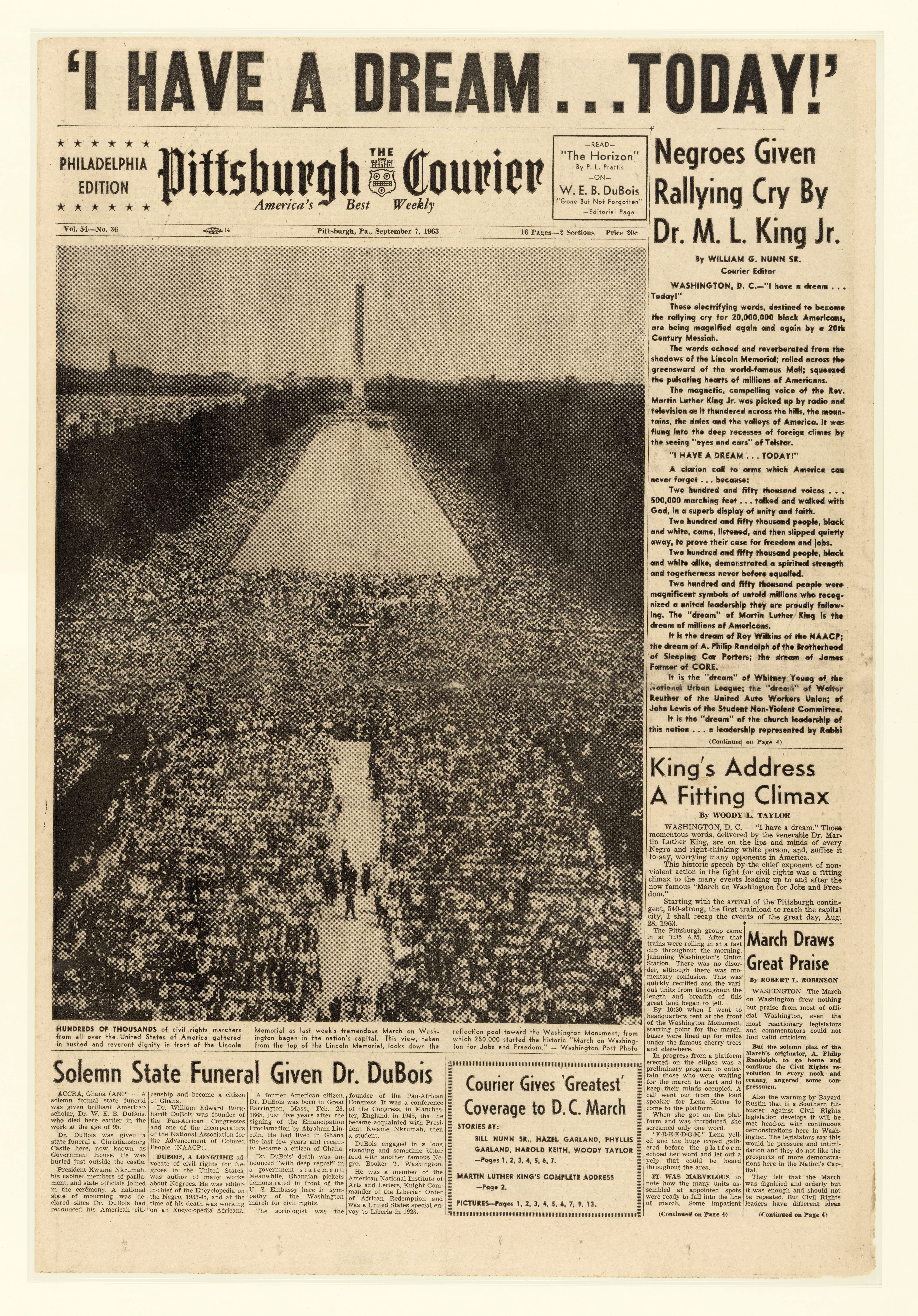
The Pittsburgh Courier
Edwin Harleston, a security guard, founded The Pittsburgh Courier in 1907. Three years later, Robert L. Vann guided the newspaper to prominence. The weekly newspaper’s mission was to improve African Americans’ political and economic status. In editorials, the Courier urged readers to support the National Urban League, the NAACP, Ethiopia during World War I, and the paper’s “Double V” campaign. Their motto evolved from “Read by 10,000 Colored People” to “America’s Best Weekly.” By 1942, the Courier had the largest reach of black newspapers in the United States, with a circulation of nearly 200,000 and at least 14 editions. In 1965, John Sengstacke, owner and publisher of The Chicago Defender, bought The Pittsburgh Courier. It is still published today, but called The New Pittsburgh Courier.
view larger image
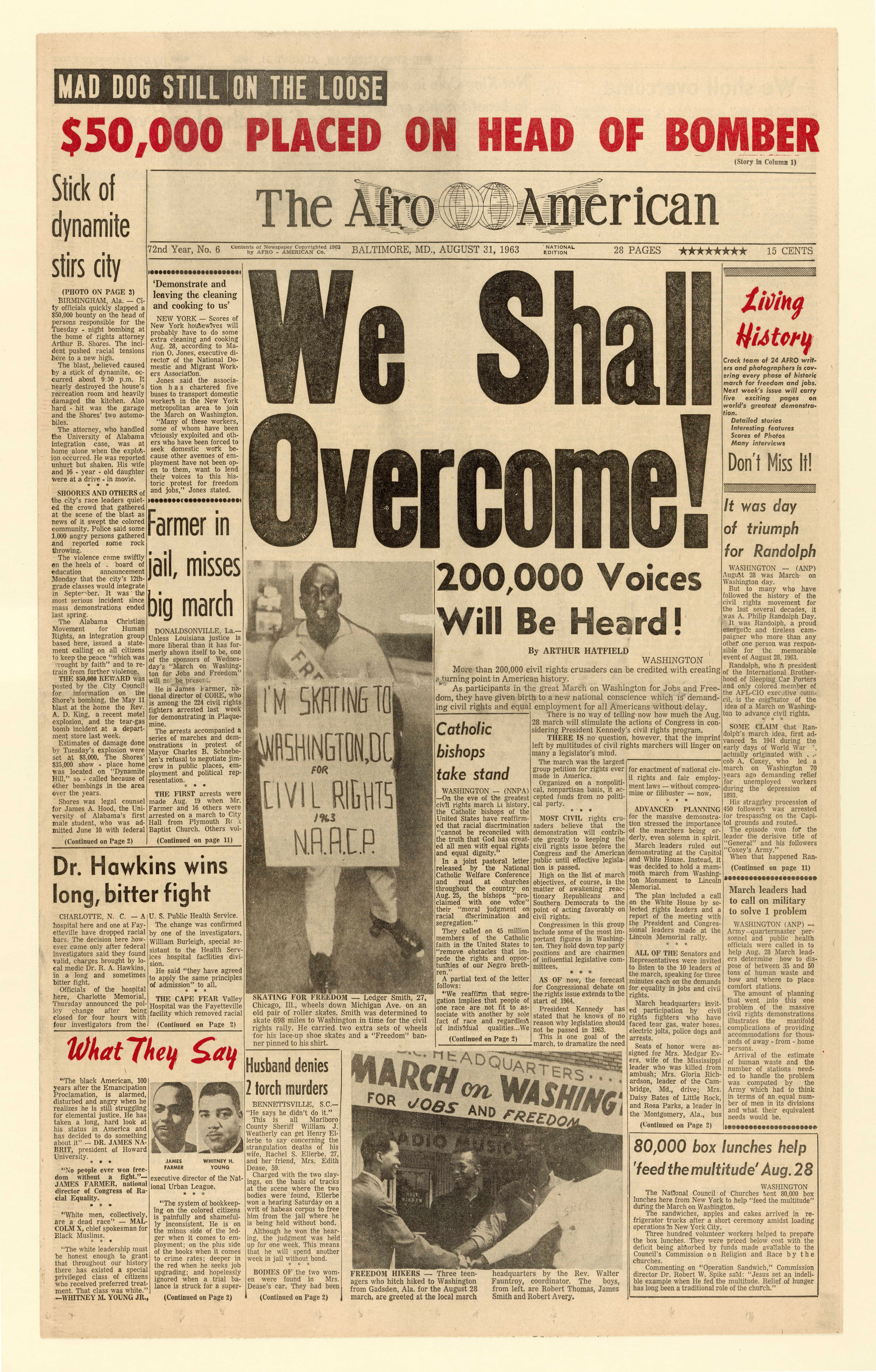
The Afro-American
John Henry Murphy Sr., a former slave, began The Afro-American Newspaper in 1892 in Baltimore, Md. Murphy’s goal for the weekly paper was to “stay out of politics except to expose corruption and condemn injustice, race prejudice and the cowardice of compromise.” By the 1920s, the paper expanded to include Washington, D.C., Philadelphia, Pa., Newark, N.J., and Richmond, Va., editions. Later, it gained a national readership with 13 different editions. Notable Afro-American journalists included Langston Hughes and Lillian Johnson, the first female sportswriter at a black newspaper. Descendents of the Murphy family continue to publish The Afro-American today.
view larger image
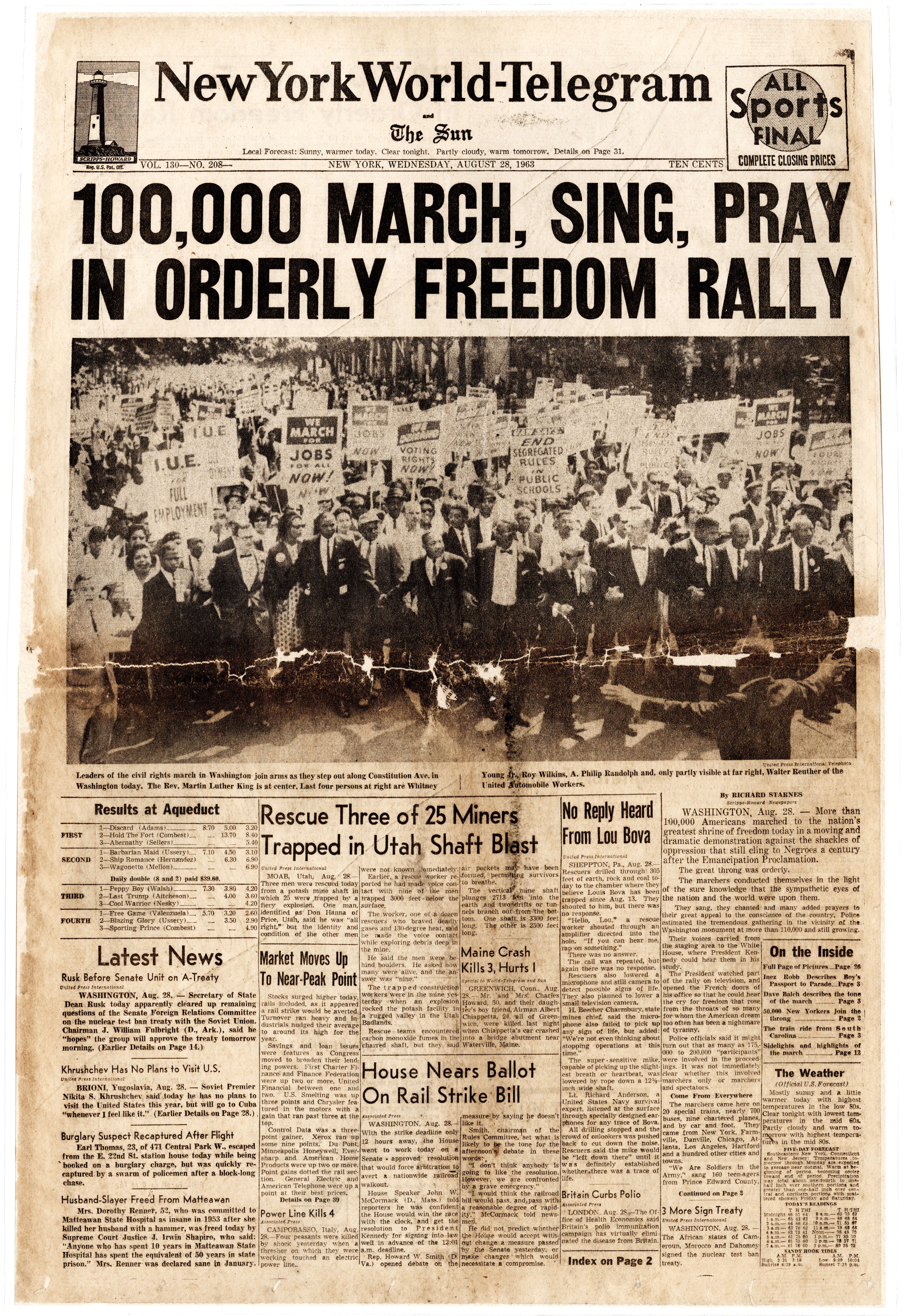
New York World-Telegram and The Sun
Owned by the Scripps-Howard publishing company, the New York World-Telegram and The Sun competed with the many daily newspapers in New York. (The name comes from two mergers, first of the World and Telegram and then of the World-Telegram and The Sun.) The newspaper was considered more conservative than its peers, catering to a wealthier white audience. It lasted only 16 years, from 1950 to 1966, until competition for advertising revenue forced it to close.
view larger image
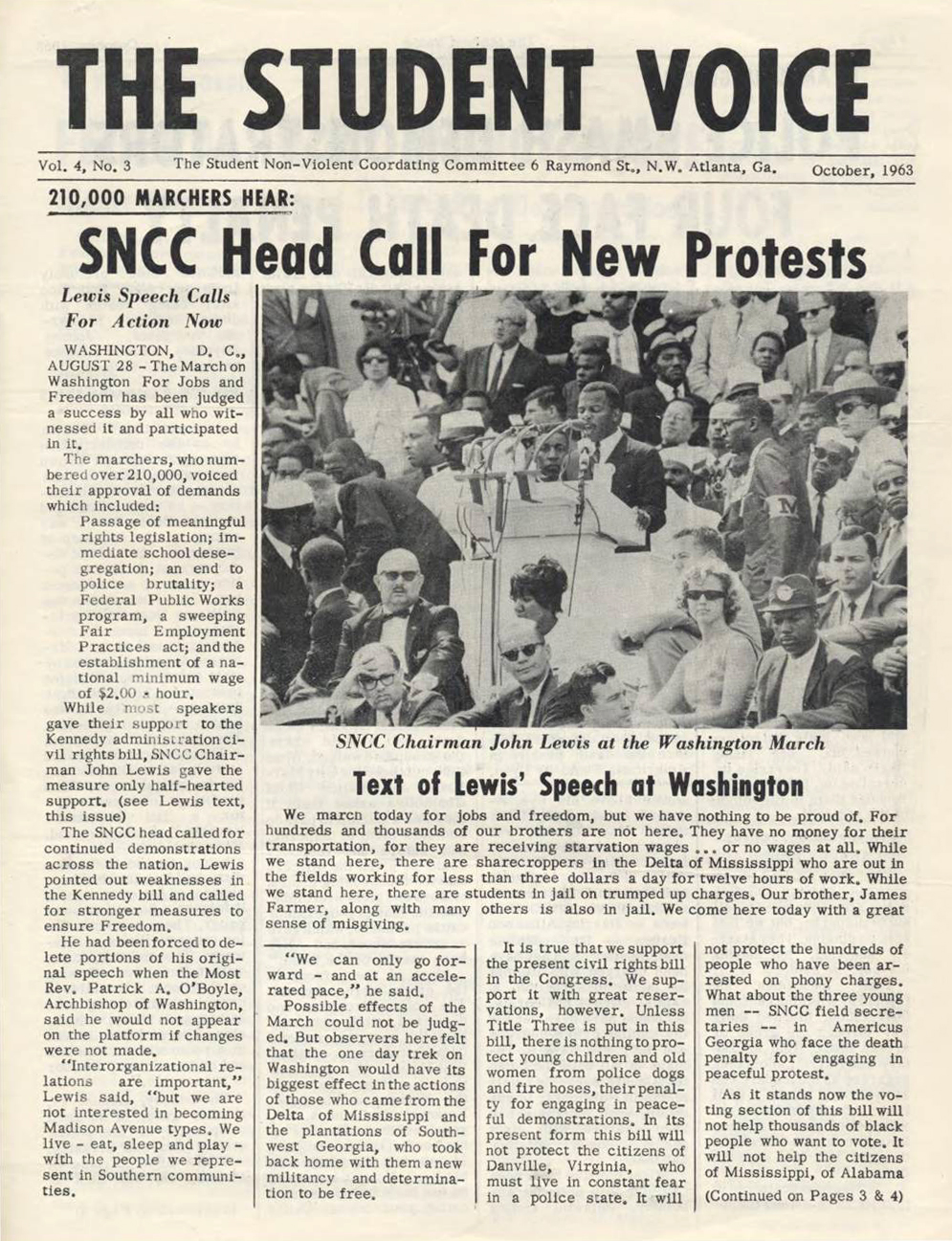
The Student Voice
The Atlanta-based Student Nonviolent Coordinating Committee (SNCC) founded The Student Voice in June 1960. SNCC started a newspaper to improve communications and publicize their members’ work; to provide accurate coverage of the civil rights movement and to “present to northern supporters news which the press was not covering.” Later goals included communicating with potential donors and selling SNCC materials such as records and posters. SNCC distributed its paper across the country, particularly at college campuses. The paper changed its name in June 1965 to The Voice; its final issue was on Dec. 20, 1965.
view larger image
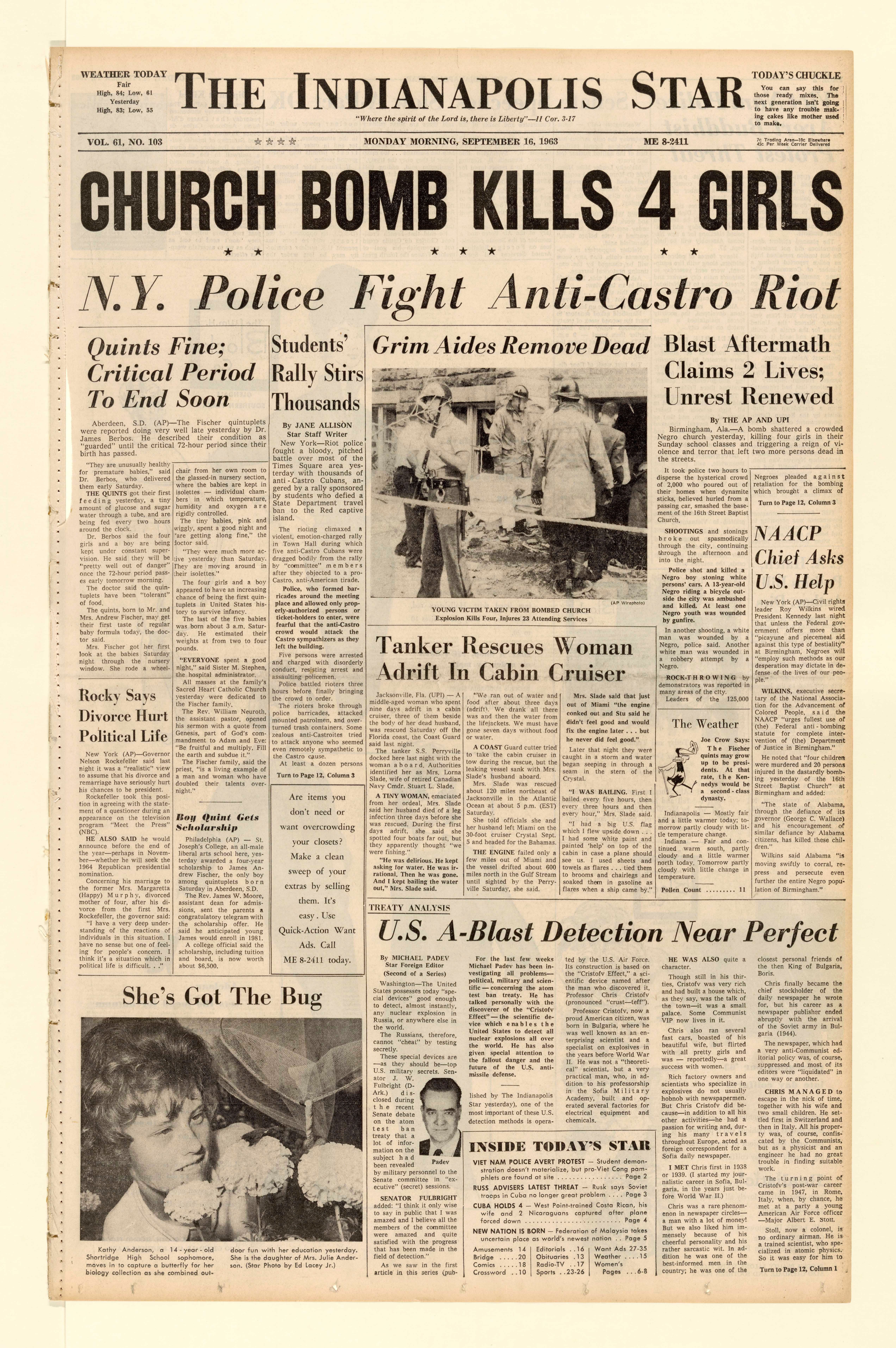
The Indianapolis Star
The Indianapolis Star was founded at the turn of the 20th century with the declaration that it would be “an independent paper for the people — a newspaper, not an organ” (that is, a tool for politicians to spread their messages). The morning daily directly competed with The Indianapolis News, and after 1948, developed a larger circulation among white readers. (The black community tended to support The World, The Ledger, The Freeman and The Recorder.) Eugene C. Pulliam, a Republican, bought the Star in the 1940s, as he expanded his media empire. Editorials tended to follow Pulliam’s views. However, the Star featured op-eds that opposed the newspapers’ views and were prefaced by a quote from Voltaire: “I disagree with what you say, but I will defend to the death your right to say it.
view larger image
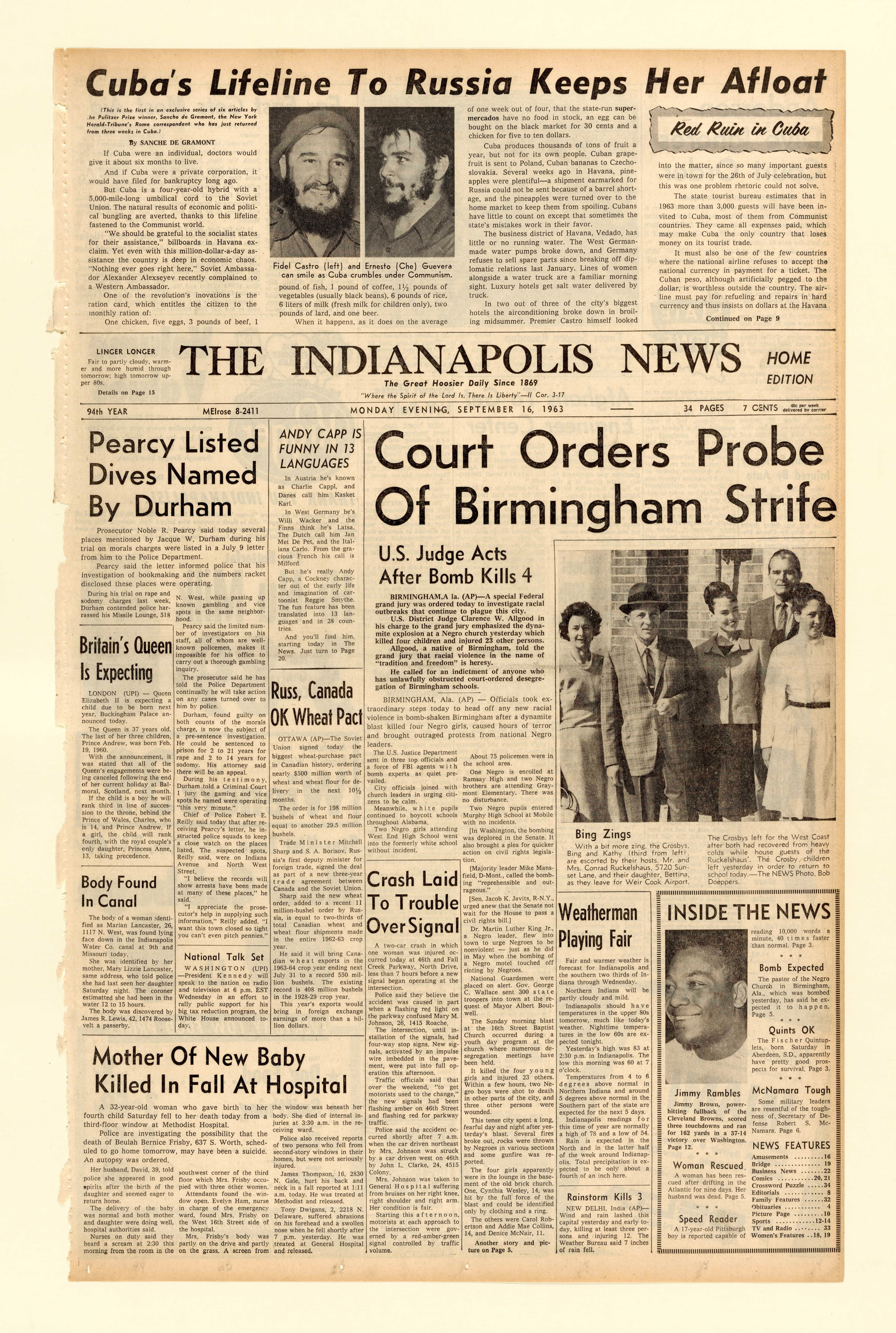
The Indianapolis News
Reporter John Hampton Holliday founded The Indianapolis News in 1869, when he was 23 years old. An afternoon daily, the News was the largest-circulation paper in the state until 1948. It won a Pulitzer Prize in 1932 for reports on the city’s wasteful spending. Eugene C. Pulliam, a Republican, bought the paper in 1944 as he expanded his publishing empire; editorials tended to follow his political views. (Pulliam owned 46 newspapers over the course of his career, including papers in Arizona and New Mexico.) The last issue of The Indianapolis News was published on Oct. 1, 1999.
view larger image
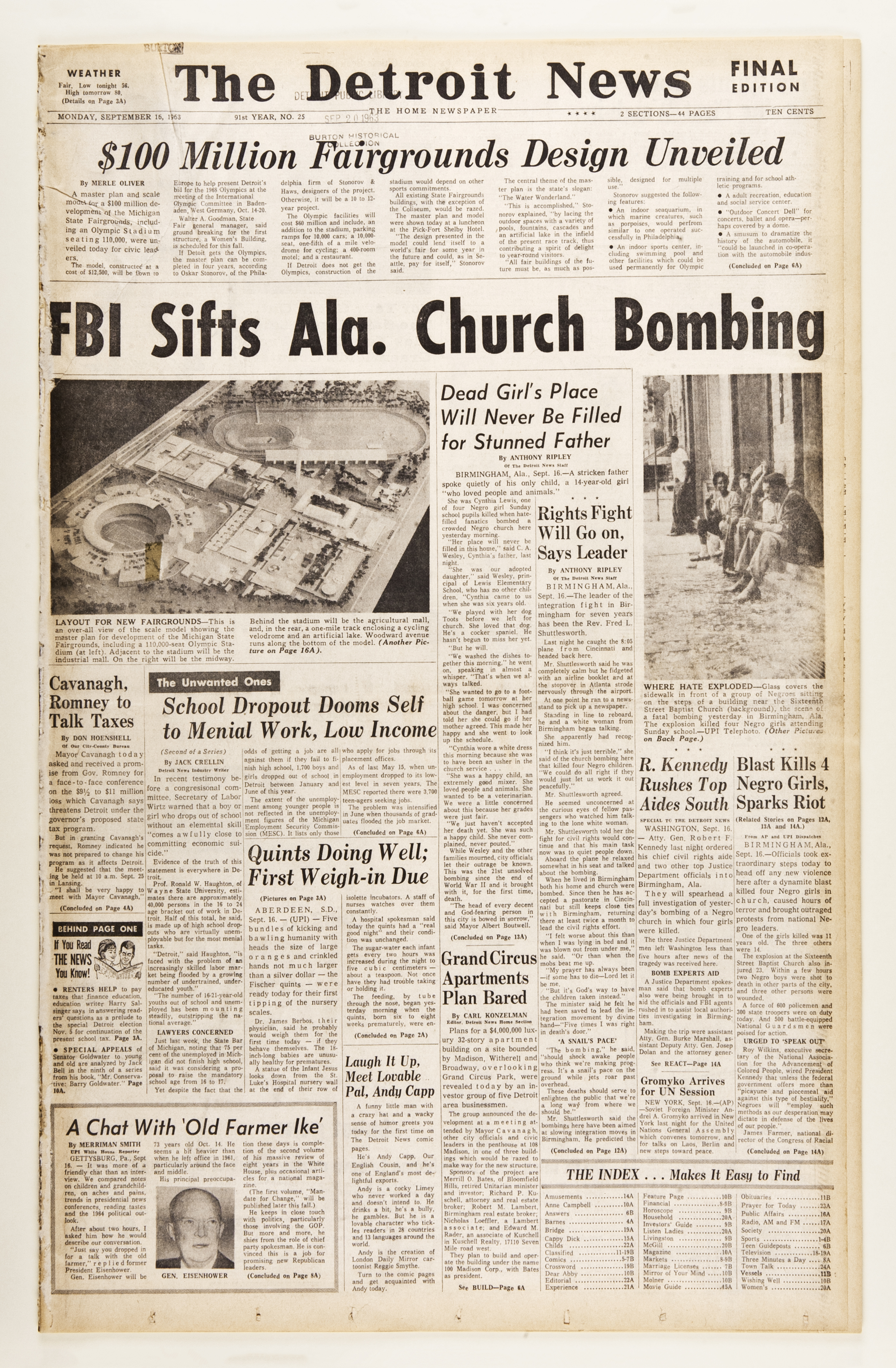
The Detroit News
James E. Scripps founded the Evening News on Aug. 23, 1873. At the time, at least five other English-language newspapers served Detroit. By the early 1900s, the Evening News merged with The Detroit Tribute to become The Detroit News; it published Monday through Saturday. In 1920, the News launched the first newspaper-owned broadcasting station, WWJ. The News continues to operate today, though no longer prints a Saturday edition.
view larger image




